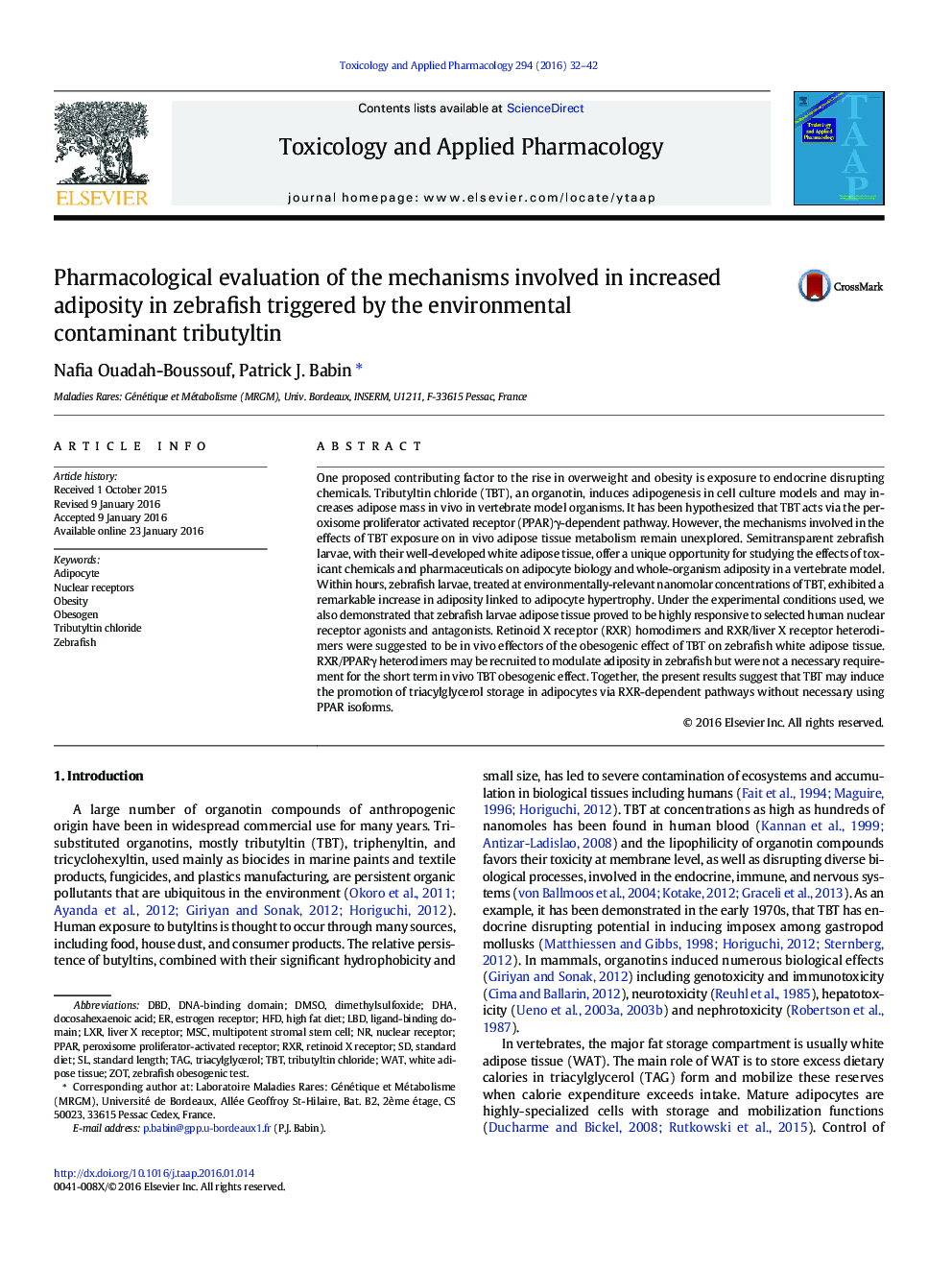| Article ID | Journal | Published Year | Pages | File Type |
|---|---|---|---|---|
| 2568213 | Toxicology and Applied Pharmacology | 2016 | 11 Pages |
•The environmental contaminant tributyltin (TBT) may promote obesity development.•TBT may induce adipocyte hypertrophy through a PPARγ independent mechanism.•RXR/RXR and RXR/LXR dimers are potential in vivo effectors of TBT in zebrafish.
One proposed contributing factor to the rise in overweight and obesity is exposure to endocrine disrupting chemicals. Tributyltin chloride (TBT), an organotin, induces adipogenesis in cell culture models and may increases adipose mass in vivo in vertebrate model organisms. It has been hypothesized that TBT acts via the peroxisome proliferator activated receptor (PPAR)γ-dependent pathway. However, the mechanisms involved in the effects of TBT exposure on in vivo adipose tissue metabolism remain unexplored. Semitransparent zebrafish larvae, with their well-developed white adipose tissue, offer a unique opportunity for studying the effects of toxicant chemicals and pharmaceuticals on adipocyte biology and whole-organism adiposity in a vertebrate model. Within hours, zebrafish larvae, treated at environmentally-relevant nanomolar concentrations of TBT, exhibited a remarkable increase in adiposity linked to adipocyte hypertrophy. Under the experimental conditions used, we also demonstrated that zebrafish larvae adipose tissue proved to be highly responsive to selected human nuclear receptor agonists and antagonists. Retinoid X receptor (RXR) homodimers and RXR/liver X receptor heterodimers were suggested to be in vivo effectors of the obesogenic effect of TBT on zebrafish white adipose tissue. RXR/PPARγ heterodimers may be recruited to modulate adiposity in zebrafish but were not a necessary requirement for the short term in vivo TBT obesogenic effect. Together, the present results suggest that TBT may induce the promotion of triacylglycerol storage in adipocytes via RXR-dependent pathways without necessary using PPAR isoforms.
Graphical abstractFigure optionsDownload full-size imageDownload high-quality image (273 K)Download as PowerPoint slide
